Climber becomes first woman to ascend one of the world's toughest climbs
Professional rock climber Angela Eiter made history last week, becoming the first woman to successfully tackle one of the world's most difficult ascents. So, why hasn't her feat been met with much acclaim? Inigo Atkin asks
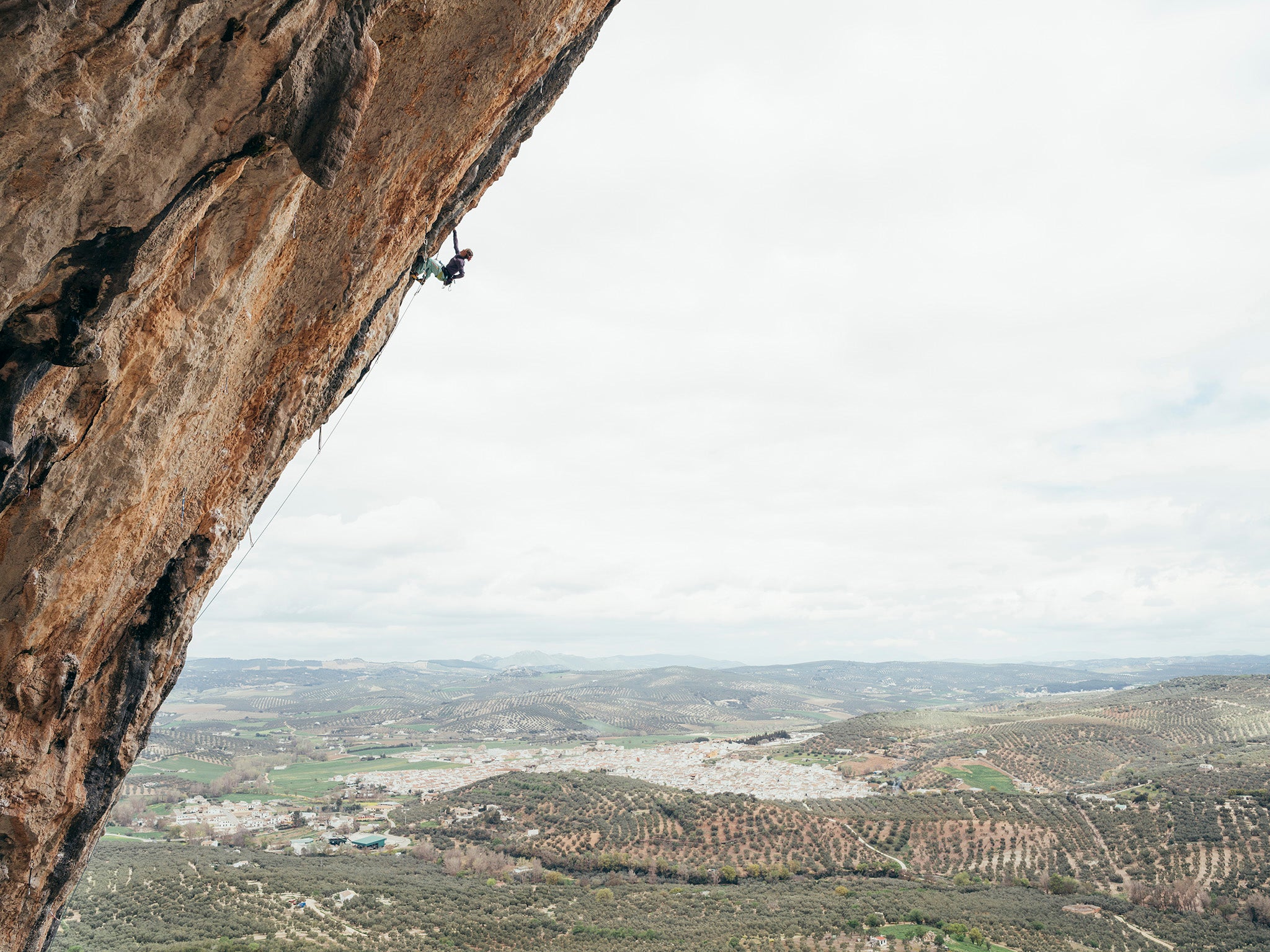
Last week, professional rock climber Angela Eiter completed a climbing route so difficult that its significance is impossible to understate. For most of us, the sheer complexity of the physical and mental challenges required to complete a rock climb like this are hard to grasp. She joins a tiny group of ultra-elite climbers, who until now were all male. So why haven’t you heard about it?
In the Spanish village of Villanueva del Rosario, not far from Malaga, is an awe-inspiring cave. This limestone formation is a sweep of smooth overhanging rock, dappled orange and grey, curving like a curtain to its full height some hundred metres above the floor.
It is in this imposing atmosphere that 31-year old Eiter last week achieved a truly historic milestone. Her successful ascent of the route Planta de Shiva marks the first time a woman has climbed the grade 9b. Eiter who is from Imst in Austria, where she runs a climbing school with her husband, had spent over two years working on the route, aiming to climb it in one attempt from the ground to the top of the cliff with no assistance from her rope or other artificial means. When I asked her what it took to achieve something like this, she told me that “during the whole two years I returned seven times...the process taught me that if I was going to succeed I had to give absolutely 100 per cent”. It sounds simple enough, but when you look at the context it’s clear the magnitude of what she has done.
Less than a dozen people, all men, have climbed this grade before. Only two men, American Chris Sharma and Czech Adam Ondra, have ever climbed a harder grade. And although when asked, Angela plays down the significance of being the first woman to do this – “the fact that no woman had ever climbed a route in that grade range [didn’t influence my choice] of project...climbing is not a question about gender” – it’s difficult to think of a sporting comparison in which a female athlete stands toe-to-toe with all her strongest male counterparts, in a sport that depends upon physical power, stamina and rigorous technique.
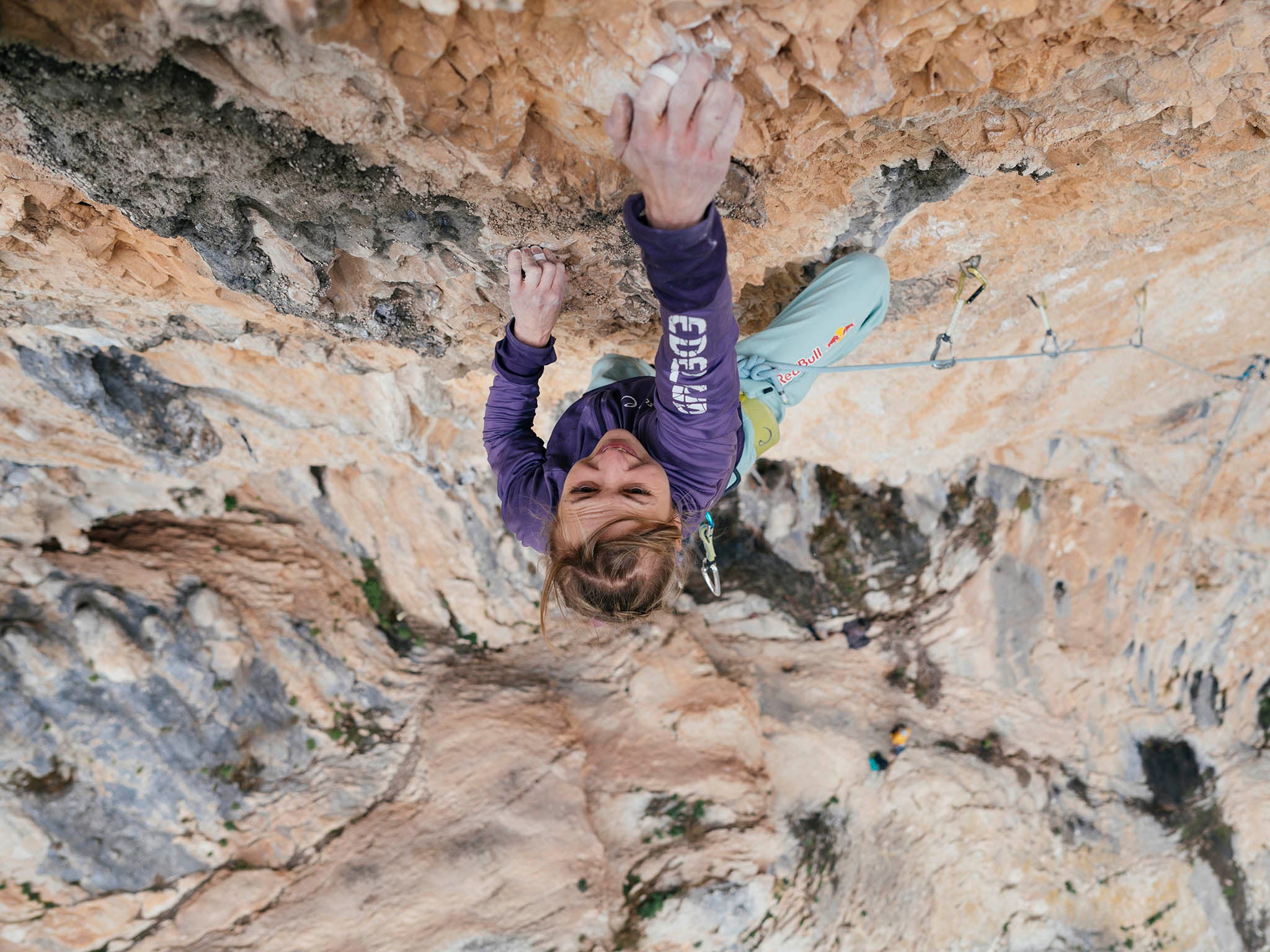
When you consider this against the disparity between the sexes in so many sports – look at tennis, where women are still expected to play a truncated version of the male game – Eiter’s achievement begins to take on a new shape. Although Angela comes from a competition climbing background (she was World Champion four times), a discipline in which man-made routes can be ‘set’ differently for men and women, climbing on rock is the ultimate leveller; no one gets to change the position or quality of the holds to suit their style or size. For the vast majority of its practitioners climbing demonstrates an inherent and enviable equality between genders.
Perhaps it this equality that is partly behind the decision to include climbing in the Tokyo 2020 Olympics. It certainly seems surprising that until now climbing has been excluded from the club especially considering its obvious resonance with the Olympic motto of Citius, Altius, Fortius (Faster, Higher, Stronger). But the International Olympic Committee and the International Federation of Sport Climbing seem, at least in terms of an equal and representative approach, to have got it right this time. Climbers will compete for one medal each for men and women, with the competition being divided between three equally weighted disciplines (lead, speed and boulder), and just one male and female representative from each country. Some concerns do exist around the chosen format because most climbers specialise heavily in one of the three disciplines. However, as Angela Eiter points out, “combining all three disciplines is a compromise better than changing completely the mode of one single discipline”. By and large, the reaction within the climbing community to adoption as an Olympic sport was overwhelmingly positive.
That readiness to accept change is drastically different to the furore that engulfed the far more established Olympic sport of rowing last year, as changes also designed to take effect in Tokyo were discussed. The requirement to offer an equal number of medals to men and women might seem relatively obvious – but the reduction in number of events for men as a result revealed a latent and nasty current of misogyny within rowing, one that might take years or decades to resolve.
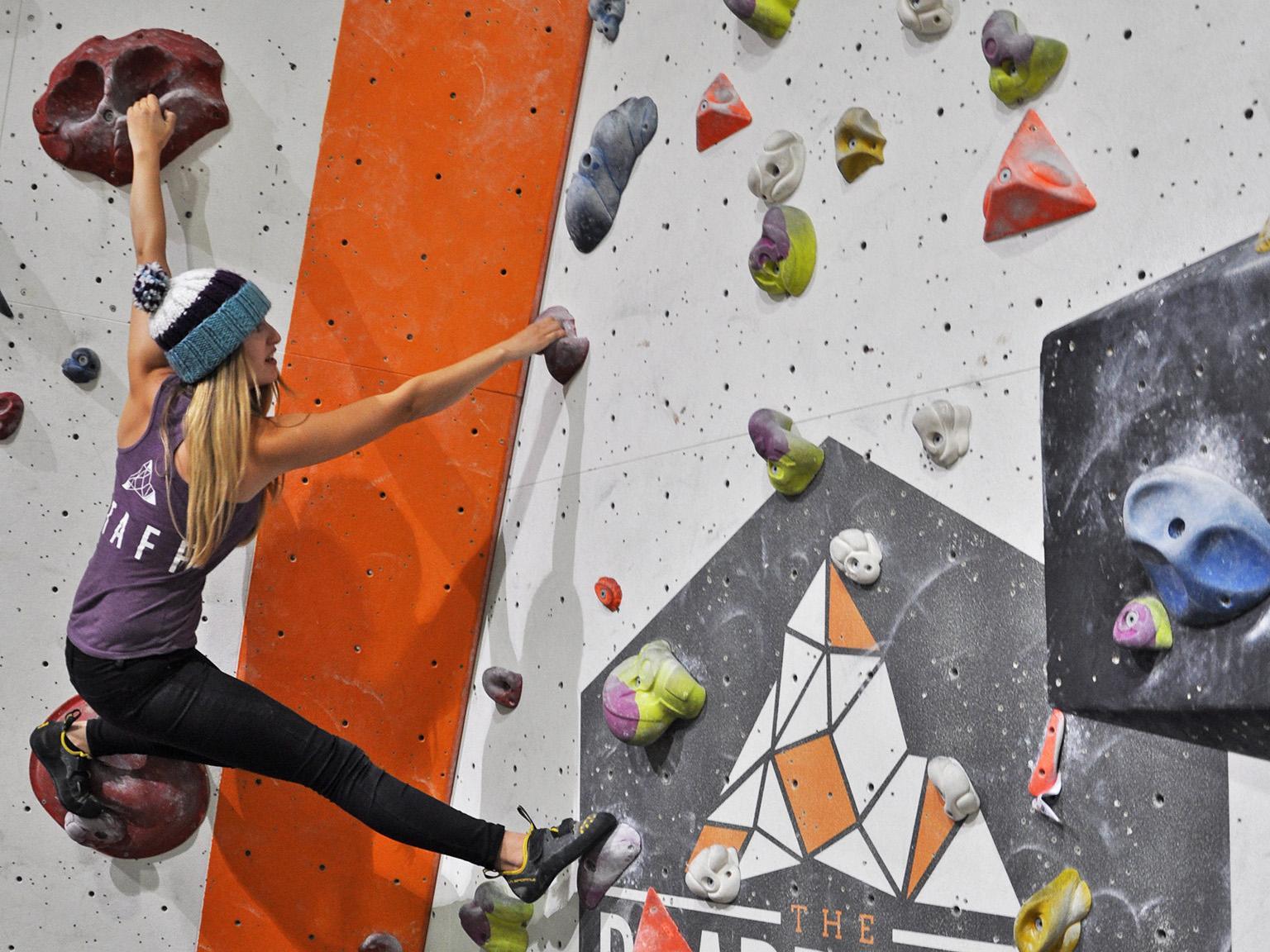
Yet Britain’s climbers remain largely unburdened by such concerns. One such climber is Shauna Coxsey – the 24 year old powerhouse from Warrington is the current Bouldering World Cup Champion and she has just announced her intention to compete at Tokyo in 2020. Like many climbers, this will involve a change in her focus and training, but she seems wholly upbeat about the challenges involved. She is part of a generation of climbers drawn to indoor and competition climbing. With its bright colours, recognisable patterns, and exciting and dynamic movements, indoor climbing is everything it’s gritty and adventurous outdoor counterpart is not – accessible, cheap, and no fuss.
When inspiring and relatable role models like Shauna abound, it should come as no surprise that climbing is undergoing a boom. Analysis from the British Mountaineering Council (BMC), the representative body for climbers and walkers in the UK, shows that participation is on a meteoric rise – in fact, they estimate that today more UK adults regularly take part in the sports they represent (indoor climbing, outdoor climbing, mountaineering, hill-walking) than all the regular participants in golf, tennis and rugby combined. And it seems that it is women who are leading this charge, especially when it comes to climbing indoors – the BMC approximates that although women make up between 30 per cent and 40 per cent of indoor climbers, they make up almost two thirds of ‘new’ climbers – those who have only been doing it for a few years.
One could be forgiven for thinking that the outlook is abundantly rosy for the sport of climbing. And it is true that there is much to applaud. But a concerning undercurrent must be addressed if the sport is to continue demonstrating its potential as both a symbol of equality, and a vehicle for the change required to make that equality a reality.
An obvious symptom of that undercurrent is common not just to climbing but other sports and a far broader spectrum of activity too. Eiter’s ascent last week received almost zero media coverage outside of the climbing world. In one sense this is unsurprising – climbing is quite a niche topic. But this is indicative of a bigger, unresolved problem about how we cover the achievements of women in the press and broadcast media. And it is surprising that at the time of writing, no major UK news outlet has covered Angy’s story, because the fact is that climbing does make headlines quite regularly – it’s just that the stories are all about men.
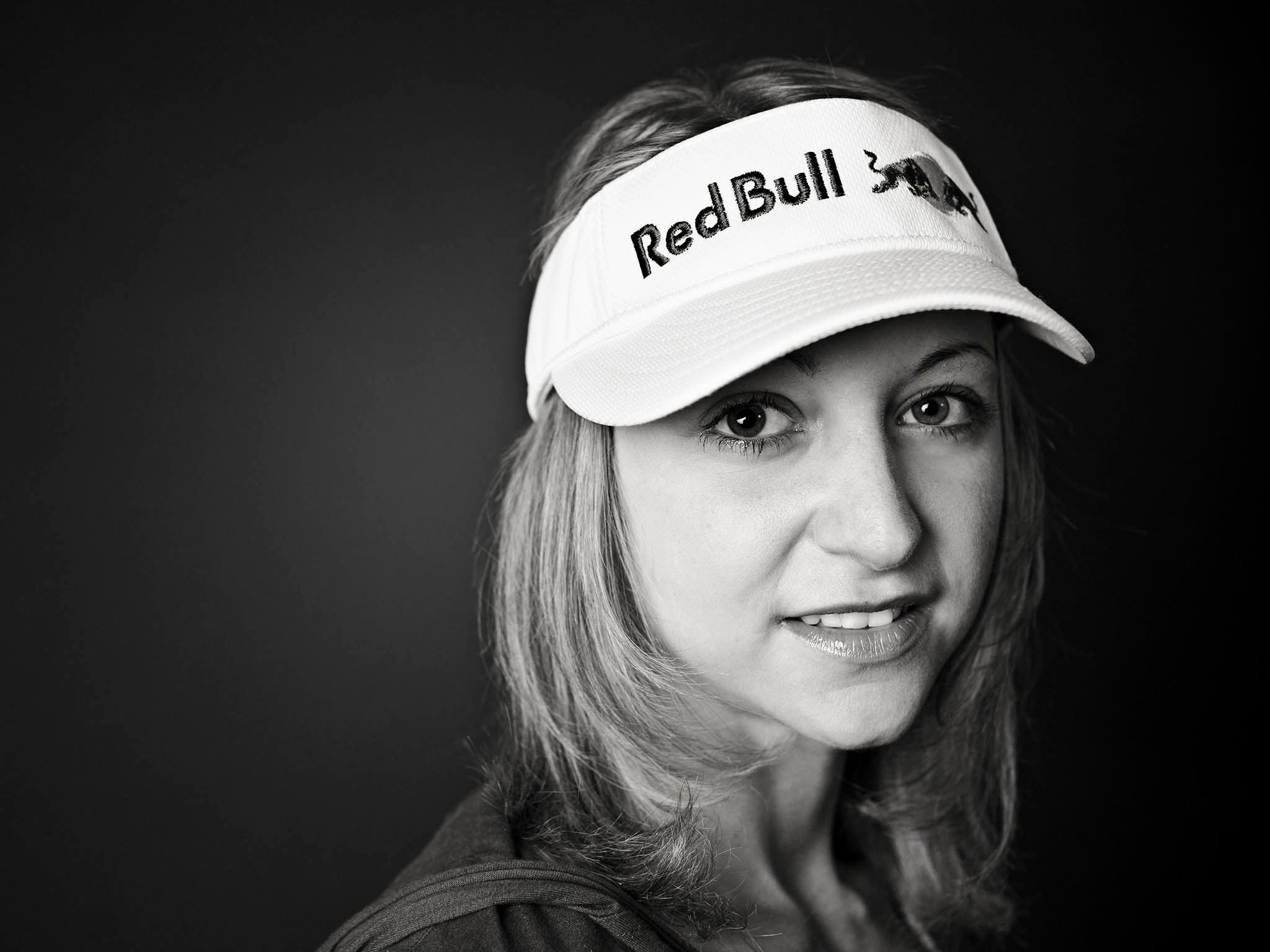
Adam Ondra climbed the world’s new hardest route this year, a story picked up by The Guardian and The Times. Just a few months before that, newspapers on both sides of the Atlantic and beyond went wild for photos of Alex Honnold’s ropeless ascent of one of the most famous rock formations on the globe, the kilometre-high El Capitan in Yosemite National Park. Laudable achievements both, they deserved fanfare. But Eiter’s achievement represents an equally if not more significant stretching of the athletic envelope, something akin to a woman running a sub-10 second 100m. And it is all the more exciting because there is a group of female climbers clamouring at her heels with a bevy of almost as impressive achievements. So why is no-one hearing about them?
The simple answer is that all too often women in sport become, entirely involuntarily, part of the wrong story. I remember reading with disgust earlier this year a story about Serena Williams that referred glowingly to the birth of her first child as “her greatest ever achievement”. I’m in no position to comment on anyone’s reproductive prowess, but that doesn’t mean this isn’t a farcical and insulting claim about a woman who has reached unique, unprecedented levels of greatness within her chosen sport. Time and again, female athletes suffer from a depiction that forces them into a normalised, relatable facade. We adore the superhuman qualities of our male sporting heroes; we are suspicious of the same traits in women.
Interestingly, this seems to have next to no impact on the women achieving these incredible things – presumably they are too busy putting in the hard graft. The overriding impression I got from discussing her ascent with Angela was that there was hardly any external pressure on her in the lead up to this – she spoke of the “unconditional support from two really important people, my husband and my father” and pointed out to me that “climbing is an individual sport. Climbing is not a question about gender – the same amount of women can fail on a route as men, or the opposite”, which seems to quite effectively demonstrate that as someone with the most direct involvement in these issues, she is also one of the most clear-headed about them.
Often it seems that women are, again involuntarily, victims of their own success in this way. In climbing, the plethora of hard and inspiring climbs done by women in the last year has made it difficult to keep track of when and where the latest big news is coming from. I spoke to one committed female climber who confessed to feeling “bored” by the constant cycle of new achievements by both women and men at an elite level – she pointed out that it has no relevance to a normal climber, let alone someone unfamiliar with the sport.
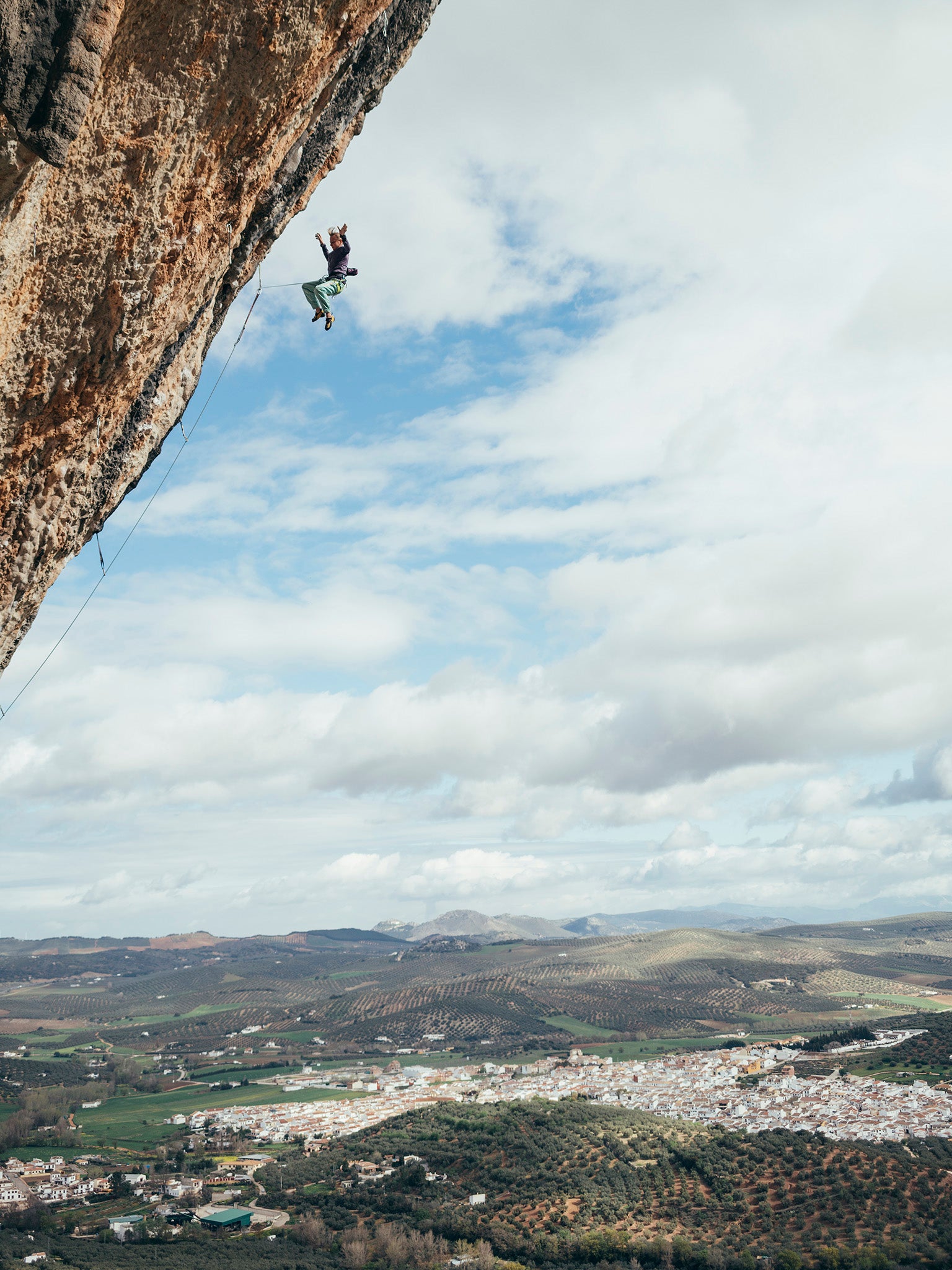
That is a viewpoint that has significant implications not just for the way that female climbers are represented but for the way they choose to go climbing as well. Yet it’s not a view shared by everyone. Danielle Pugh is an avid climber and an instructor at The Boardroom Climbing Centre in North Wales, one of many new climbing centres that has opened in the last five years to cater for, and develop, the burgeoning indoor climbing scene in the UK. She thinks ascents like Eiter’s do represent something significant: “watching and hearing about all these women do these impressive climbs kind of gives you a bit of inspiration... it just makes you think ‘oh well, if they can do that, I can do that – if I want’”.
It’s that simple attitudinal shift that is at the heart of the need to change the way we represent women in sport. Speaking to Danielle in many ways confirmed what Angela had to say about her groundbreaking ascent and its ramifications – she firmly believed that gender was not an issue for her. Despite accepting that the sport was “male-dominated”, Danielle made it clear that she too saw it as an individual endeavour, saying “the most important thing is to just climb as yourself, and figure it out for yourself; not take advice from someone for the wrong reasons, and just enjoy it”.
While it might be easy for some to put those concerns aside, there is always more that can be done to make sport as representative as possible – if female athletes are not celebrated in the same way as men, how can we expect women to aspire to the same heights? Climbing is an activity that offers a vehicle for a kind of equality not often found within the all-too-frequently macho confines of organised sport. It can be an exercise in colourful indoor fitness fun – something that has garnered it a very cool reputation in the metropolises of the United Kingdom, or it can be an adrenaline-fuelled adventure on windswept mountains and crags. But the increasing popularity of both of those elements, combined with its positive outlook and message, mean that climbing is here to stay on our newspaper pages, our TV screens and beyond. As Danielle says, “it’s got that addictiveness to it”.
Angela Eiter’s ascent means something for many people – it is a step towards a kind of sporting equality unmatched in the playing fields and arenas we are used to watching. It must be recognised as such, and she should be given the applause she justly deserves.
Join our commenting forum
Join thought-provoking conversations, follow other Independent readers and see their replies
Comments
Bookmark popover
Removed from bookmarks